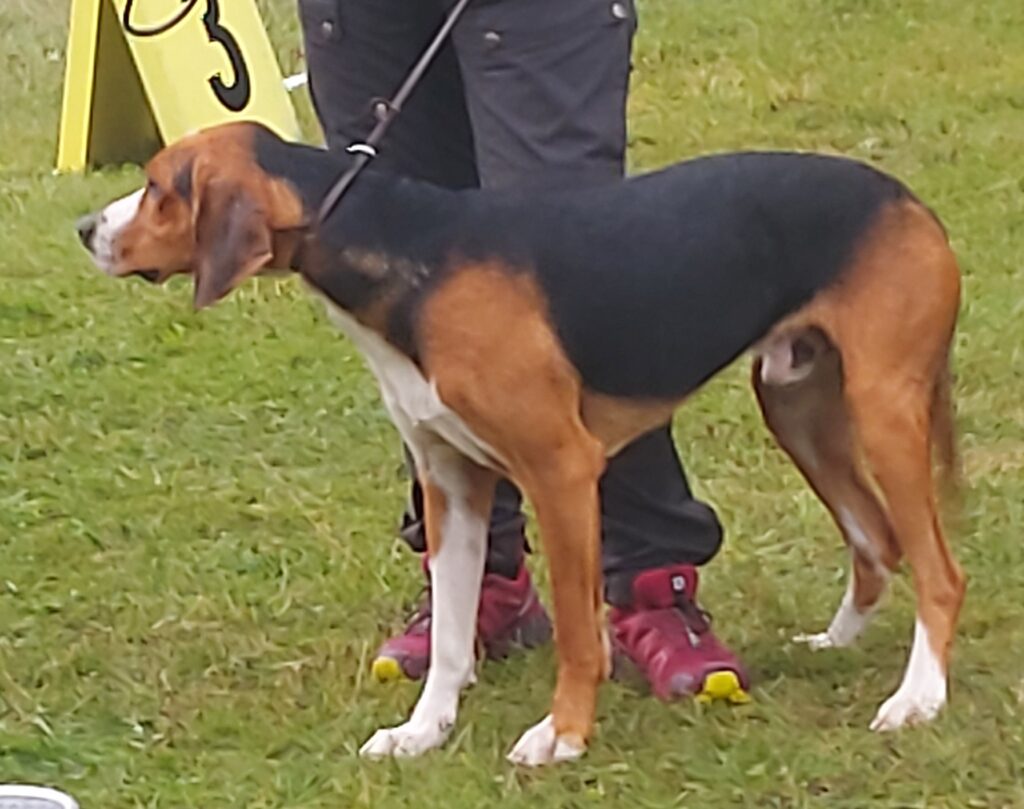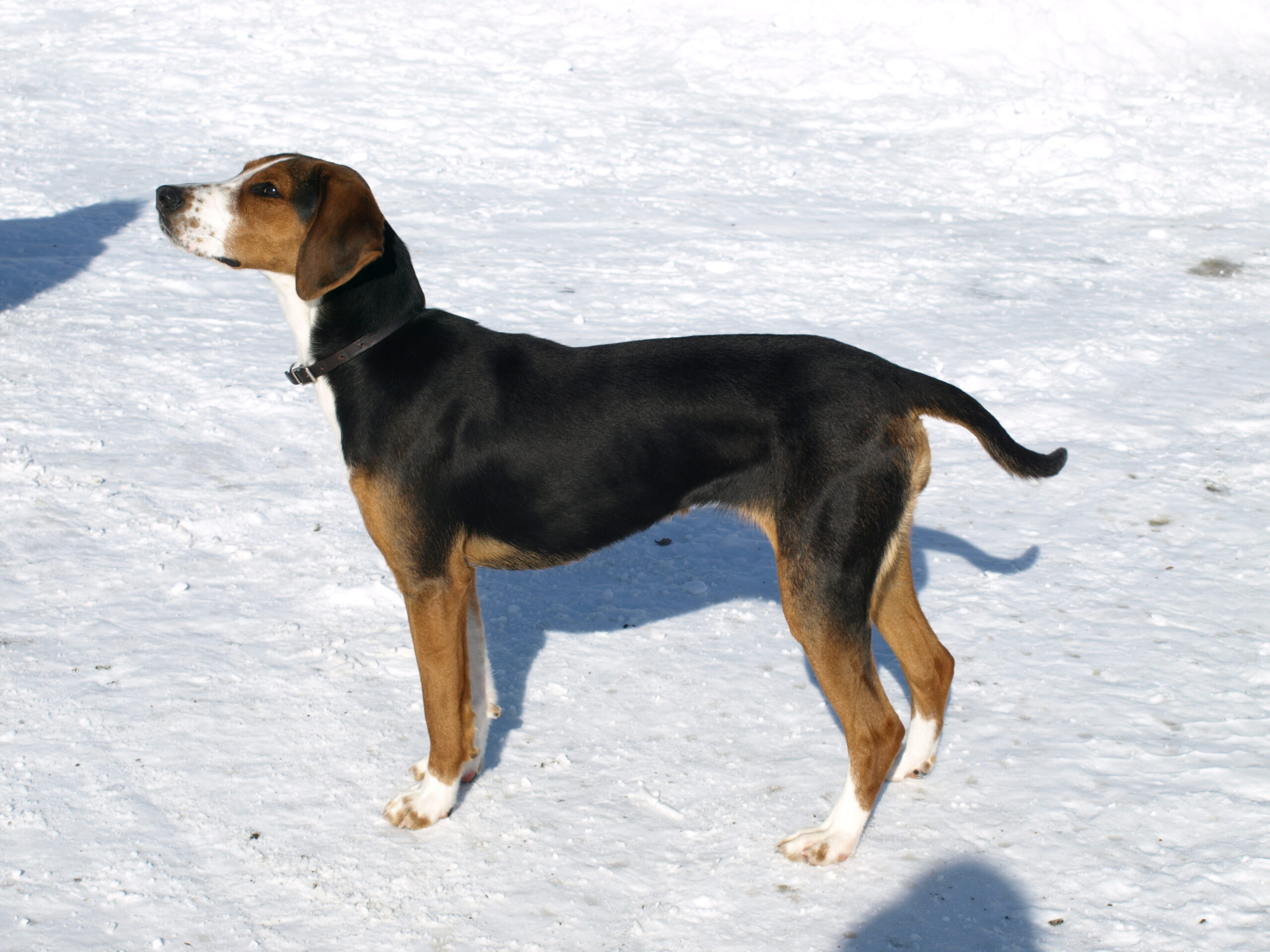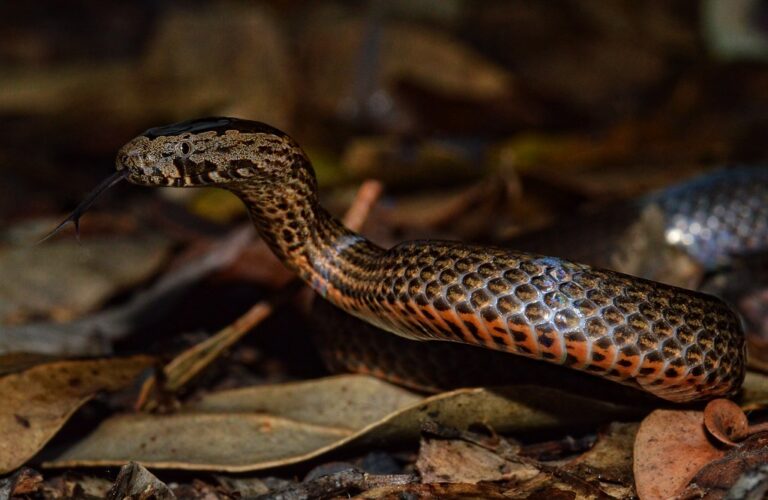The pictures we use in our articles might not show exactly what the words say. We choose these pictures to make you interested in reading more. The pictures work together with the words but don’t take their place. The words still tell you the important facts.
Introduction
The Finnish Hound, a breed steeped in history and known for its exceptional hunting abilities, has captured the hearts of dog enthusiasts worldwide. Originating from Finland in the 19th century, this remarkable canine was bred to navigate the challenging terrains of its homeland while tracking game with unparalleled skill. Today, we delve deep into the world of Finnish Hounds, uncovering fascinating facts that showcase why this breed is not just a hunter's companion but also a beloved family pet.
From their distinctive tricolor coats to their friendly temperaments, Finnish Hounds offer a unique blend of working dog prowess and affectionate companionship. In this comprehensive guide, we'll explore the breed's origins, physical characteristics, temperament, health considerations, and much more. Whether you're a potential owner, a current Finnish Hound parent, or simply an admirer of this remarkable breed, prepare to be captivated by the facts about Finnish Hounds that make them truly special.
Key Takeaways
- Finnish Hounds were developed in the 19th century for hunting in Finland's diverse landscapes
- They are medium-sized dogs with a distinctive tricolor coat of black, tan, and white
- Known for their friendly disposition, Finnish Hounds make excellent family pets
- The breed requires significant exercise and mental stimulation due to their high energy levels
- Finnish Hounds have a strong prey drive and benefit from early socialization and training
- They are generally healthy but can be prone to specific genetic conditions
- With proper care, Finnish Hounds have an average lifespan of about 12 years
10 Fascinating Facts About Finnish Hounds

1. A Breed Born from Necessity
The Finnish Hound's creation was driven by the need for a versatile hunting dog capable of thriving in Finland's varied terrain. Developed through careful breeding of local dogs with imported breeds like the German Holsteiner Hound, Harrier, and Beagle, the Finnish Hound emerged as a robust and skilled hunter.
This unique combination of bloodlines resulted in a dog with exceptional scenting abilities, endurance, and the adaptability to work in diverse environmental conditions. The breed's success in meeting the demands of Finnish hunters led to its official recognition by the Finnish Kennel Club in 1932.
2. Tricolor Coat with a Purpose
One of the most striking features of the Finnish Hound is its tricolor coat, typically a blend of black, tan, and white. This distinctive coloration isn't just for show; it serves a practical purpose in the field.
The contrasting colors help hunters spot their dogs easily in various terrains, from dense forests to open fields. Additionally, the short, dense coat is water-resistant, allowing Finnish Hounds to work comfortably in different weather conditions, from rainy days to snowy winters.
3. A Voice That Carries
Finnish Hounds are known for their melodious and carrying bark, which is an essential trait for a hunting dog. Their vocal nature serves a crucial purpose during hunts, allowing hunters to track their dogs' location and progress.
While this trait is invaluable in the field, it's important for potential owners to be aware that Finnish Hounds may not be the best choice for those living in apartments or areas with strict noise regulations. Their tendency to vocalize can be managed with training but is an inherent part of their hunting instincts.
4. Independence with a Touch of Stubbornness
Finnish Hounds were bred to work independently, often at a distance from their handlers. This trait has resulted in a breed that's capable of making decisions on its own, which can sometimes be perceived as stubbornness.
While their independence makes them excellent working dogs, it can present challenges in training. Owners need to use consistent, positive reinforcement methods to channel this independence constructively. With patience and understanding, Finnish Hounds can become well-behaved companions who still retain their unique personalities.
5. Endurance Champions
The Finnish Hound's stamina is legendary among hunting breeds. They were developed to work tirelessly in challenging conditions, often tracking game for hours on end. This incredible endurance makes them excellent partners for active individuals or families.
However, their high energy levels mean that Finnish Hounds require significant daily exercise to remain happy and healthy. Without proper outlets for their energy, they may develop behavioral issues. Regular runs, long walks, and engaging play sessions are essential for keeping a Finnish Hound physically and mentally satisfied.
6. Friendly Family Companions
Despite their hunting prowess, Finnish Hounds are known for their friendly and affectionate nature. They form strong bonds with their families and are particularly good with children, making them excellent family pets.
Their social nature means they thrive on human companionship and don't do well when left alone for long periods. Finnish Hounds often get along well with other dogs, but their strong prey drive means they may need careful introduction to smaller pets.
7. Minimal Grooming Needs
Finnish Hounds are relatively low-maintenance when it comes to grooming. Their short, dense coat requires only occasional brushing to remove loose hair and distribute natural oils. This makes them an excellent choice for owners who prefer a dog that doesn't require extensive grooming routines.
However, during shedding seasons, more frequent brushing may be necessary to manage the increased hair loss. Regular nail trimming, ear cleaning, and dental care are also important aspects of their overall grooming needs.
8. Versatile Hunters
While primarily known for their skills in hunting hare and fox, Finnish Hounds are versatile hunters capable of tracking various game. Their keen sense of smell, coupled with their endurance and intelligence, allows them to adapt to different hunting scenarios.
In modern times, many Finnish Hounds participate in hunting trials and competitions, showcasing their abilities in scent trailing and game tracking. These events not only highlight the breed's skills but also help maintain their working instincts.
9. Health Considerations
Like all purebred dogs, Finnish Hounds can be prone to certain genetic health issues. While generally healthy, potential owners should be aware of conditions such as cerebellar ataxia, hip dysplasia, and diabetes mellitus that can affect the breed.
Regular veterinary check-ups, a balanced diet, and appropriate exercise can help prevent or manage many health issues. Responsible breeding practices are also crucial in reducing the incidence of genetic conditions within the breed.
10. Longevity and Lifelong Companionship
With proper care, Finnish Hounds have an average lifespan of about 12 years, though many can live longer. This relatively long lifespan for a medium-sized breed means that bringing a Finnish Hound into your family is a long-term commitment.
Throughout their lives, Finnish Hounds remain active and playful, often retaining their puppy-like enthusiasm well into their senior years. This youthful spirit, combined with their loyal nature, makes them lifelong companions that bring joy and energy to their families for many years.
Finnish Hound Facts: By the Numbers
| Fact Category | Details |
|---|---|
| Origin | 19th century Finland |
| Official Recognition | 1932 by Finnish Kennel Club |
| Weight | 45-55 pounds (20-25 kg) |
| Height | 20-24 inches (52-61 cm) |
| Coat Colors | Tricolor (black, tan, white) |
| Life Expectancy | ~12 years |
| Exercise Needs | High (2+ hours daily) |
| Grooming Needs | Low to Moderate |
| Temperament | Friendly, Energetic, Independent |
| Trainability | Moderate (can be stubborn) |
Frequently Asked Questions About Finnish Hounds
Are Finnish Hounds good family dogs?
Yes, Finnish Hounds make excellent family dogs. They are known for their friendly and affectionate nature, especially with children. Their high energy levels and playful disposition make them great companions for active families who can provide them with plenty of exercise and attention.
How much exercise does a Finnish Hound need?
Finnish Hounds have high exercise requirements. They need at least 2 hours of physical activity daily, which can include long walks, runs, or engaging play sessions. Mental stimulation through training or puzzle toys is also important to keep them happy and well-behaved.
Are Finnish Hounds easy to train?
Finnish Hounds are intelligent but can be independent, which can make training challenging. They respond best to positive reinforcement techniques and consistent training sessions. Early socialization and obedience training are crucial for developing a well-mannered Finnish Hound.
Do Finnish Hounds shed a lot?
Finnish Hounds have a short, dense coat that sheds moderately throughout the year, with heavier shedding during seasonal changes. Regular brushing can help manage shedding and keep their coat healthy. Overall, their grooming needs are relatively low compared to many other breeds.
Can Finnish Hounds live in apartments?
While Finnish Hounds can adapt to various living situations, they are not ideal for apartment living. Their high energy levels, need for space to run, and tendency to bark make them better suited for homes with large yards or access to open spaces where they can exercise freely.
Conclusion
The Finnish Hound stands out as a remarkable breed, combining the qualities of an exceptional hunting dog with those of a loving family companion. From their origins in the challenging terrains of Finland to their place in modern homes, these dogs have proven their versatility and endearing nature time and again. Their distinctive appearance, friendly temperament, and impressive hunting abilities make them a fascinating subject for dog enthusiasts and potential owners alike.
While Finnish Hounds require significant exercise and may present training challenges due to their independent nature, the rewards of owning one are immeasurable. Their loyalty, affection, and zest for life can bring joy and adventure to the right home. As with any breed, potential owners should carefully consider their lifestyle and capabilities before welcoming a Finnish Hound into their family. For those who can meet their needs, Finnish Hounds offer a unique blend of companionship, energy, and unwavering devotion that makes them truly special members of the canine world.






